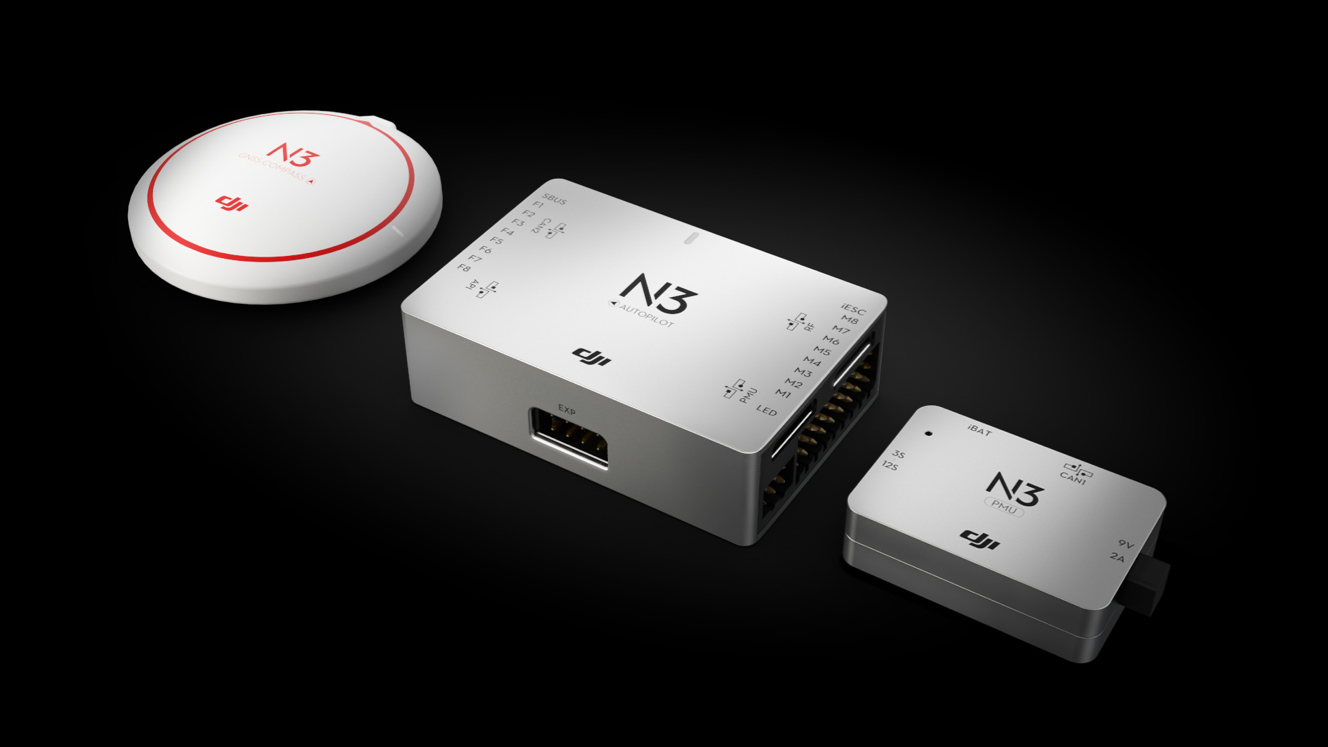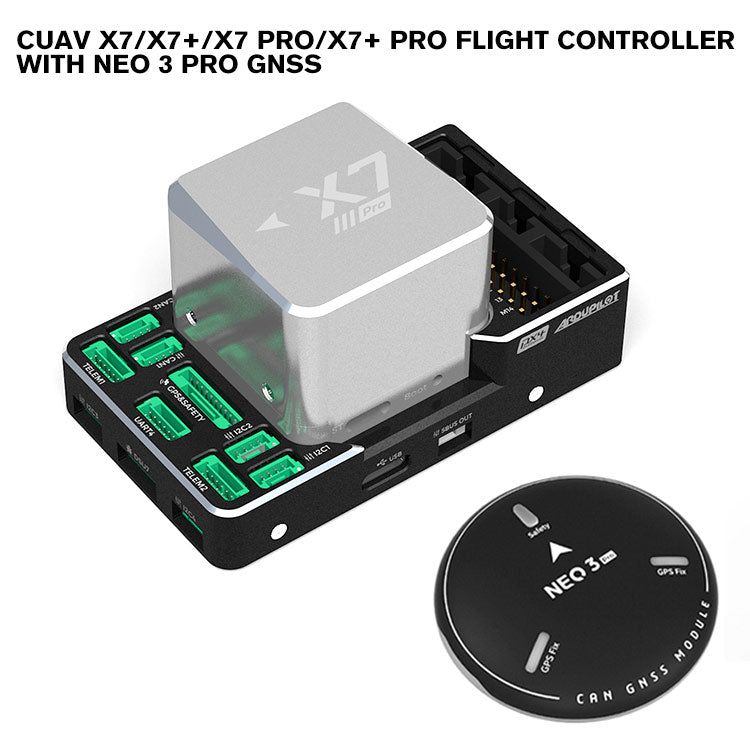Unequaled Accuracy: SparkNavi Drone Flight Controller and GNSS/INS Made in Taiwan
Exploring the Duty of Drone Flight Controllers in Enhancing Flight Security and Navigation Performance
The improvement of drone technology has dramatically increased the value of flight controllers, which offer as the brain of these airborne cars. By incorporating real-time data from a selection of sensing units, flight controllers boost trip security and navigating performance, ensuring that drones can run smoothly even in complicated atmospheres.

Comprehending Flight Controllers
Trip controllers are indispensable parts in the functioning of drones, serving as the minds that stabilize and handle trip procedures. These innovative gadgets process data from different sensors, consisting of accelerometers, gyroscopes, and GPS, to guarantee that the drone keeps its desired trip path. The flight controller analyzes this data and executes commands based on pre-defined formulas, allowing the drone to respond to ecological changes, such as wind or challenges.
The primary feature of a trip controller is to keep security during flight. It attains this by making real-time modifications to the drone's motors and control surfaces, guaranteeing balance and control. In addition, modern flight controllers include advanced functions such as waypoint navigation, permitting for automated flight courses and boosted operational performance.
Comprehending the design of flight controllers is vital for both specialists and enthusiasts. As innovation developments, trip controllers have come to be much more portable and capable, incorporating synthetic intelligence to adapt and improve decision-making procedures to complicated flight scenarios.
Key Elements of Trip Security
Attaining optimum flight security in drones counts on a number of key parts that function in show to guarantee smooth and controlled procedures. Central to this stability is the trip controller itself, which processes information from numerous sensors to keep the wanted flight attitude. This consists of accelerometers and gyroscopes that determine activity and orientation, enabling real-time adjustments to the drone's position.
Another crucial part is the digital speed controllers (ESCs), which regulate the power provided to the motors. By finely tuning electric motor speeds in response to flight controller commands, ESCs help keep equilibrium and combat disruptions caused by wind or sudden movements.
Additionally, the design of the drone's frame plays a crucial role in flight security. A well-structured frame lessens vibrations and boosts the overall aerodynamic account, adding to smoother flight attributes. The combination of advanced formulas within the flight controller aids in anticipating modifications, making sure a responsive and adaptable trip experience.
With each other, these elements create a cohesive system that improves a drone's security, enabling accurate handling and boosted performance in different trip problems.
Navigation Efficiency Techniques
Performance in navigating is important for maximizing drone procedures, especially in complex settings. Efficient navigation techniques enhance the capability of drones to traverse difficult surfaces and stay clear of obstacles, consequently boosting functional effectiveness and safety and security.
One popular technique is the application of sophisticated general practitioners and inertial dimension devices (IMUs) that give precise area tracking and positioning information. These technologies allow drones to determine optimal flight courses in real-time, taking into consideration various elements such as wind conditions and prospective challenges.
Another technique involves the use of formulas for course preparation and optimization. Formulas such as A * and Dijkstra's algorithm can be released to identify the most efficient route while decreasing power intake and flight time. In addition, integrating device knowing designs can make it possible for drones to adaptively find out from their settings, improving navigating capacities through experience.

Impact on Autonomous Drones
The combination of innovative navigation techniques has exceptionally transformed the abilities of autonomous drones, enabling them to run with greater autonomy and precision. SparkNavi drone flight controller and GNSS/INS made in taiwan. These improvements are largely credited to innovative trip controllers that use real-time data handling and sensor combination, permitting drones to navigate complex environments flawlessly
The effect on autonomous drones prolongs beyond plain navigation; it encompasses improved obstacle evasion, boosted stability throughout dynamic problems, and boosted mission reliability. By leveraging algorithms that integrate device knowing and expert system, drones can adjust to altering circumstances, making informed choices that optimize their flight paths while lessening dangers.
In addition, the implementation of durable flight controllers has actually helped with the implementation of complex tasks, such as aerial examinations, delivery services, and agricultural surveillance, with marginal human intervention. This capability not just enhances operations however likewise lowers human mistake, therefore boosting general security.
As a result, the operational range of autonomous drones has actually increased considerably, making them essential tools in different sectors. Their capacity to do effectively in varied scenarios highlights the important role that advanced flight controllers play in shaping the future of unmanned aerial systems.
Future Fads in Flight Control
Regularly, innovations in flight control innovation are poised to redefine the landscape of drone operations in the coming years. Emerging trends indicate a significant change towards improved fabricated intelligence (AI) combination, enabling flight controllers to refine real-time data extra efficiently. This evolution will certainly facilitate improved decision-making capacities, allowing drones to adjust to vibrant ecological problems autonomously.
Additionally, the execution of device knowing algorithms is anticipated to improve predictive maintenance, thus reducing downtime and prolonging the lifecycle of drone parts. This proactive approach to upkeep will certainly be vital link as drone applications broaden across numerous markets, from agriculture to logistics.

.png)
Finally, improvements in safe and secure visite site communication methods will certainly resolve safety and governing worries, making sure that drones can run perfectly in overloaded airspaces (SparkNavi drone flight controller and GNSS/INS made in taiwan). Collectively, these patterns aim towards a future where trip control systems are not just smarter and a lot more also qualified however effective of operating securely in a significantly incorporated airspace
Final Thought
In final thought, drone flight controllers are essential to enhancing trip security and navigating effectiveness via the innovative handling of sensor information. By preserving optimum flight mindsets and employing sophisticated formulas for course optimization and obstacle evasion, these controllers considerably add to the autonomy and operational safety of drones. As technology continues to evolve, Recommended Site even more innovations in flight control systems are expected, guaranteeing better performance and expanded capacities in the world of unmanned aerial automobiles.
By incorporating real-time data from an array of sensing units, trip controllers improve flight stability and navigating performance, making certain that drones can operate efficiently even in complicated settings.Trip controllers are indispensable components in the performance of drones, serving as the minds that stabilize and manage flight operations. Additionally, modern trip controllers include sophisticated functions such as waypoint navigating, permitting for automated flight paths and boosted functional effectiveness.
Central to this stability is the flight controller itself, which processes data from different sensors to maintain the preferred flight attitude.In final thought, drone flight controllers are important to improving flight stability and navigation effectiveness with the sophisticated processing of sensor data.